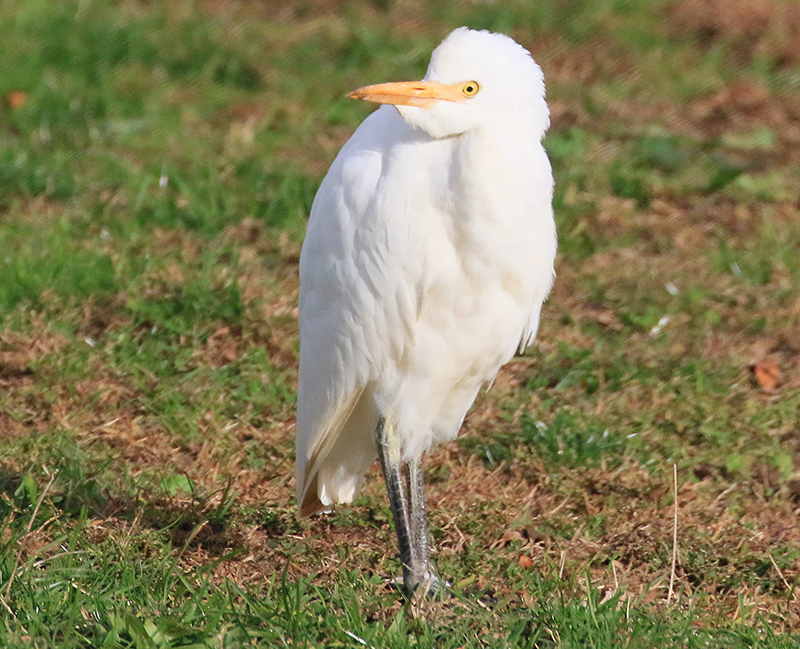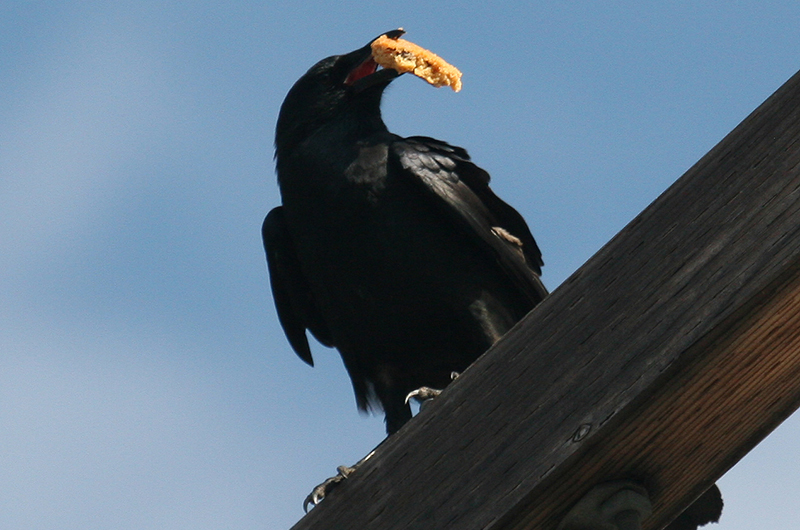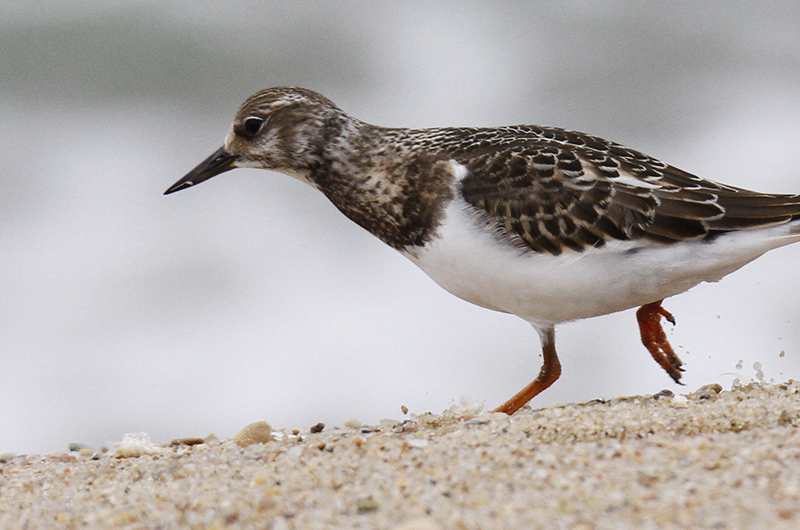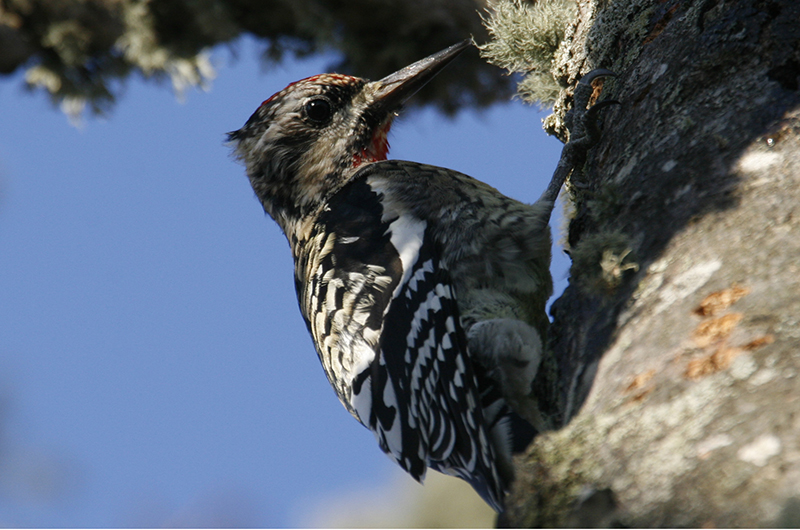This week, all four species of corvids were observed on the Island. The most unexpected find was a flock of five common ravens which have been observed over the past four weeks by Randy and Keith Proper at Island Grown initiative’s Thimble Farm. I immediately alerted other birders, and Lanny McDowell and Pete Gilmore found these birds the next day, on Nov. 1. The literature suggests that flocks of ravens at this time of the year are young birds that are not yet territorial but a family group is a possibility.
Let’s speculate about this. I found two ravens in the State Forest in September 2017, and there were scattered reports of ravens through the winter. Last summer, Betty Burton reported two ravens frequenting her Vineyard Haven birdbath. And Tony Lima, who has been seeing ravens near the Land Bank’s Wapatequa Woods, believes that they may have nested on the Verizon tower this summer, which would be a suitable place for them to nest and would explain why the ospreys were not nesting as they usually do at that site. Other sightings have ranged from Island Cohousing to near the Hospital. And now there is a flock of five ravens–possibly a family group but lacking any documentation of their breeding. It is not impossible!
Happy and Steve Spongberg report a very active flock of fish crows in Vineyard Haven near the Steamship Authority on Nov. 1. They are about two-thirds the size of a raven, but they are there in much larger numbers. The crows were so abundant that they said the flock sounded like a scene from Hitchcock’s The Birds.
The third and fourth corvids? American crows are common here and are intermediate in size between the previous species. Then there is an even more common corvid, although it is by far the smallest. Think of a blue and white bird frequenting our feeders whose call more or less resembles the caw of American crows. Yes, blue jays are the fourth corvid, and they share with other corvids the not-so-popular propensity to rob eggs and chicks from other bird’s nests.
Bird Sightings
Astrid and Lily Tilton got a treat when they found three immature bald eagles at Thimble Farm on Nov. 4. Ravens and eagles at the same farm–wow! We have seen an increase in the number of eagles visiting the Vineyard in recent years; am I risking too much by suggesting that some eagles will be here into and through the winter? Cattle egrets are unusual for egrets. They frequent upland pastures rather than shorelines and they found their way to the Americas in 1953, unassisted by people. They quickly spread across the continent and they now are a regular visitor to the Vineyard, although we do not see them every year. We have all seen pictures of them perched on large mammals in their African homeland, picking ticks and insects off the backs of the much larger herbivores.
Albert Fischer and Warren Woessner both spotted a flock of nine cattle egrets at Brookside Farm on Oct. 30; the egrets were foraging on the ground for critters that were stirred up by the moving cattle. Dave Herrmann and Henry Smith found another cattle egret the same day at the Edgartown Golf Club. Then, on Nov. 4 Holly Mercier found a cattle egret at Sweetened Water Preserve that was perched on the back of one of the goats! Thomas Wilkins reports that the egret had been there for a couple of days. There have been cattle egrets on Nantucket as well.
Nov. 4 was a busy day in the birding world. Happy and Steve Spongberg had a hermit thrush in their yard and a male rose-breasted grosbeak visited Connie Alexander’s feeder. Other species visiting her feeder include purple finch, dark-eyed junco, both nuthatches and two yellow-bellied sapsuckers. Cynthia McGrath watched an American coot walking across Norton Point Beach the same day; what is it doing there? Brian Packish also reports a barn owl he observed out on East Beach that day. From the Katama boat launch ramp, John Nelson reports 42 red-breasted mergansers and three pectoral sandpipers. And I observed a Nashville warbler at the Oak Bluffs Pumping Station, with other highlights including dark-eyed junco, palm warbler, yellow-rumped warblers, ruby-crowned kinglet, two northern pintails, two common loons yodeling and 11 hooded mergansers.
Some of our fall shorebirds are still hanging in. On Nov. 3 at Little Beach, Jeff Bernier found oystercatchers, semipalmated plovers and ruddy turnstones. He also spotted winter resident black-bellied plover, sanderling and dunlin. John Nelson counted 16 ruddy turnstones at the same location on Nov. 4, while James Suozzo observed two other oystercatchers by the Black Dog Restaurant on Oct. 30.
On Nov. 2, Cliff Erich found a flock of eastern bluebirds at Felix Neck while that day Pete Gilmore found meadowlarks in Nat’s Farm Field.
Ken Magnuson visited Squibnocket Pond on Oct. 31 and found both red-necked grebe and gadwall. Also, that same day, Albert Fischer observed a short-eared owl in the dunes at Squibnocket.
Warren Woessner found a common yellowthroat at the Eel Pond Boat Launch Ramp on Oct. 30 and spotted an osprey at Wasque on Oct. 29.
Finally, we have experienced a lot of warm wet weather recently. Satellite imagery has shown a stream of moist air flowing from the Pacific Ocean across Mexico and the Gulf of Mexico before heading north along the Atlantic Coast. It is these winds that likely brought both a western and a gray kingbird to Nantucket on Nov. 4. So, keep an eye out for western strays that might get swept east and north as they are migrating south through Mexico. Please photograph them if you find any!
Fall and winter resident species are now showing up. Please report all your sightings to birds@mvgazette.com.
Robert Culbert will schedule a private Guided Birding Tour with you and is an ecological consultant with Nature Watch, LLC living in Vineyard Haven.









Comments
Comment policy »